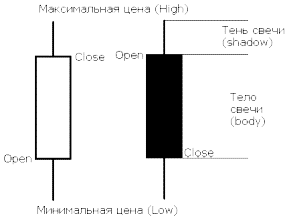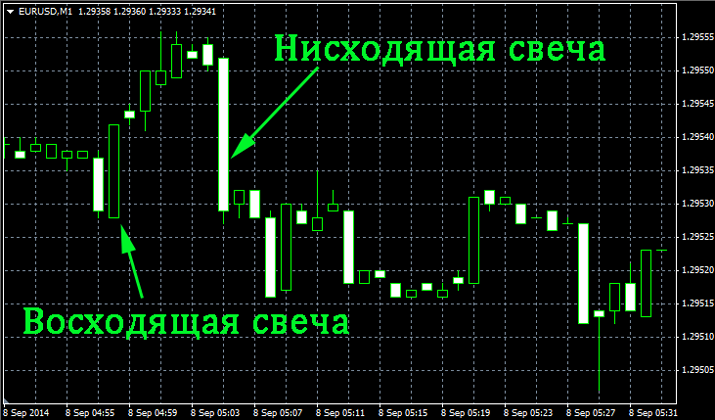Japanese candles.
The history of the use of Japanese candles began in the 17th century, as it is believed that the Japanese rice trader was the first to use such a tool in technical analysis, for this reason the name “Japanese candles” arose.
the Japanese rice trader was the first to use such a tool in technical analysis, for this reason the name “Japanese candles” arose.
A Japanese candlestick is a graphical figure that displays exchange rate fluctuations over a certain time period.
The main parameters that can be determined by studying a Japanese candlestick:
• Opening price - displays the quote at the beginning of the time frame , for example, on H1 from 16:00 to 17:00, the opening price will be the quote at 16:00.
• Closing price - a parameter similar to the previous one, but now displaying the quote at the end of the time frame.
• Minimum price - the minimum price for a given time frame.
• Shadow - shows the difference between the opening (closing) price and the maximum (minimum).
• The body of the candle is a rectangle whose length displays the difference between the opening price and the closing price.
• Color - usually a filled candle indicates a downward trend, and a transparent one indicates an upward trend; in the MetaTrader 4 terminal, by default, a bullish candle is black, a bearish candle is white. For convenience, you can change the lights at your discretion.
Chart - Japanese candlesticks.
Switching to displaying the trend line in the form of Japanese candlesticks in the trader’s trading terminal occurs in the top panel or on the “Charts” tab.

As the Forex trend , it forms so-called candlestick patterns, which may indicate its continuation or reversal.
It is candlestick figures that are most often used in graphical trend analysis; you will find a more detailed description and photo of them in the following articles in the Japanese candlesticks section.
Discussions about the effectiveness of candlestick analysis continue to this day, but like any method of studying the market, candlestick analysis has its supporters and opponents, you can form your own opinion only by using Japanese candlesticks yourself in Forex trading.


